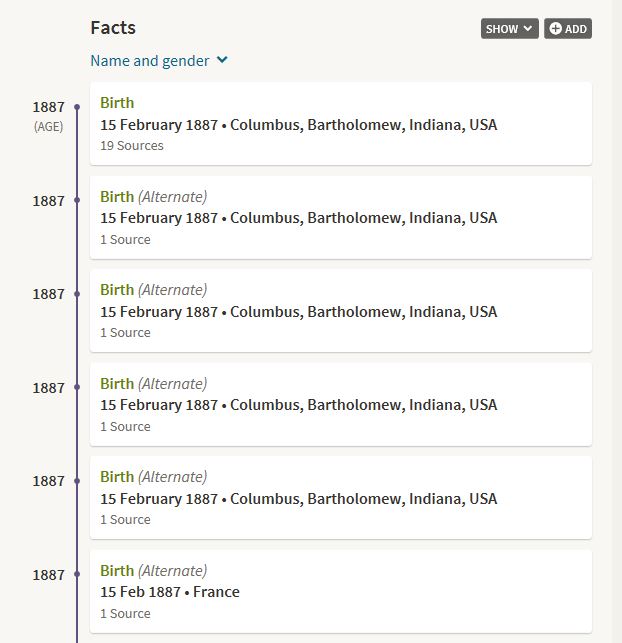
The Brick Walls
I’m sure that brick walls are every historian’s pain in the backside. What I mean by brick wall is when you reach a point in your family research where you can’t go any further.
Either you don’t have enough details to search on, or the details you do have aren’t yielding any results. This is incredibly frustrating!
The brick walls can be very time-consuming and keep you stuck with just one person. They can also be very confusing when you’re trying to sort through various details and work out inaccuracies.
Common Tools
I always start my research at Ancestry.com. What I like about this site is that you put in the few details that you know, and the site automatically works its magic on the backend, checking your details against their database. When they find information that could be possible matches, they put a little leaf on the profiles of the people who could potentially match the data they found.
In many cases, this eliminates a lot of the legwork for you. Ancestry is pretty good at providing Federal Census records, marriage records, and birth and death records. Each of these records can help you obtain many of the needed details, such as the correct spelling of the name, important dates, and family members.
But there’s a massive problem with doing research this way. Ancestry.com is a very popular site for people who are curious about their genealogy. This is great, but it also creates some issues.
I’m not pointing fingers here, but some people will accept just about every hint that Ancestry provides and save it to their tree…without verifying its accuracy against the person they attach it to. The problem with this is that many names are common names, and there are, more often than not, multiple people who share the same name.
This led to a profile with details from multiple families…but they looked like the same guy. Sorting through this can be a nightmare. Unfortunately, I found this out the hard way.
I’ve never studied to be a historian, researcher, or anything related to genealogy. I’m entirely self-taught. I watch informational videos from time to time when I see something interesting out there. But I’m pretty much learning things the hard way. So I’ve done a lot of “undoing” on my family tree to fix some of the problems that have resulted from amateur attaching of hints.
How to Solve Mysteries
I’m so early into my research that I probably shouldn’t give much advice here just yet. But since I’m working through a brick wall and have discovered some helpful tips, I’ll at least provide those.
Of course, as I learn more and experience more, I’ll definitely share with the rest of you!
So…
Tip #1: Remove the trees. If you’ve already gone into Ancestry.com and attached a bunch of personal trees to your own based on like names, go back into Ancestry.com and remove those personal trees from your people. Trust me. Remove any “alternate” facts attached to your people and those trees. There’s no reason a person’s birth should show up on their timeline 30 times. As far as I’ve found, people are generally only born once…unless they’re Jesus Christ…then by all means.

Tip #2: Follow the documentation. While documentation still contains inaccuracies, sometimes you can cross-reference other documents to clarify them. Chasing a “fact” you heard through word of mouth is often a path with no end. Birth certificates, death certificates, marriage licenses, census records, and military records provide great details you should always cross-reference when adding information to your tree.
Tip #3: Take out the trash. Seriously. If you have details saved as facts in your tree that you are unsure about in regards to accuracy, make note of those details and their sources, but get them off of your tree. I suggest this because if those “facts” are inaccurate, they could be blocking you from finding the real stories. Save them somewhere else.

Tip #4: Don’t Accept Face Value. Sometimes you’ll come across a record with the family you’re researching listed at the top or bottom of the document. When this happens, check the previous and following pages to see if additional names are associated with that family. For example, in the case of Jacob Beyl Sr., I found that the oldest in the family was 20 years old and too young to be the father of the others listed with him. The previous page revealed the parents.
With all that said, I will get back to busting through a brick wall now. But of course, I’ll leave with a quote for the day:
Genealogy: Where you confuse the dead and irritate the living.
Happy wall busting!
~Kris